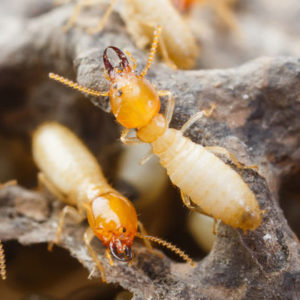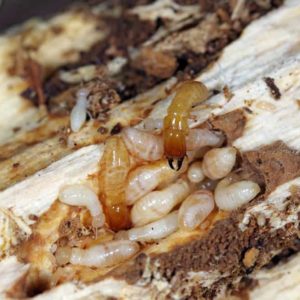One in four homes is affected by termites in their lifetime, it is essential to take termite control seriously, and take preventative measures against them.
Around this time, homeowners might be planning some exciting home improvement projects, from major remodels to DIY fixes large and small. One of the more significant aspects of home maintenance is proper pest prevention to help ensure the home remains a masterpiece more so than a money pit. Termites, in particular, pose a major threat, causing more than $5 billion in property damage each year – costs that are typically not covered by homeowners’ insurance policies.
Contingent on the species, termite colonies can consist of millions of members, all of which may be hidden out of sight either tunneling underground or inside a household’s wooden structure. Different sorts of termites can be found across the country. Regions with warmer and wetter climates typically experience greater termite pressure and are therefore at an increased risk for structural termite damage. Regardless of your location, homes of every size and model throughout the country are at risk for termite damage, and property owners need to take necessary precautions to protect their homes and their wallets.
Here are the major types of termites or termite species that could cause homeowners trouble this year:
The group of termites known collectively as subterranean termites includes some of the most destructive termite species. They prefer to nest and forage in moist soil as well as wood that is in contact with soil, hence their name. These termites build distinctive tube-like shelters, often referred to as “mud tubes,” that extend from the soil to a wood source. They eat wood 24 hours a day, seven days a week, using their saw-toothed jaws to bite off small fragments of wood one piece at a time. Over time, this feeding behavior can degrade the structural integrity of a building, potentially causing a total collapse. Subterranean termite damage threatens homeowners across the country.
Formosan Subterranean Termite:
Of all the subterranean termite, the Formosan subterranean termite has the potential to be the most destructive because it can generate much larger colonies than most other species. Their huge underground colonies can number into the millions, typically invading structures from the ground up. In a single day, a Formosan termite queen can produce more than 1,000 eggs, rapidly growing a colony. In addition to structures, they’ve also been known to infest trees, utility poles and even boats. Aside from wood, they can chew through telephone coverings and electric cable insulation, causing costly damage and power outages.
Drywood termites typically inhabit undecayed wood and do not require contact with soil to survive like subterranean termites. Therefore, they can make themselves at home in wood furniture or framing once inside. Although less aggressive than other species, they can be transported to new locations via an infested piece of furniture or a picture frame, capable of causing expensive repairs wherever they end up.
Termites are always on the move: they are now found in places where historically they did not exist. Your home is your biggest investment in terms of money, effort, and love, so naturally, you want only the best provider for all your termite inspection, prevention and treatment solutions.












